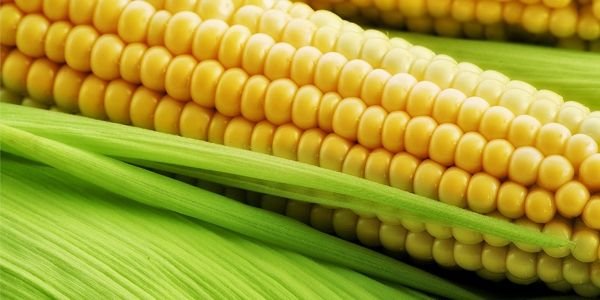Corn

Corn – a tall annual plant reaching a height of 3 meters. It is grown to produce cobs with edible seeds.
Corn is sown at a soil temperature in the sowing depth of 10-12 degrees Celsius, which usually happens in Northern Bulgaria between April 10th and 15th.
The culture requires a certain minimum of light and heat, does not tolerate shade, especially during the first half of the growing season. Its vegetation period is usually 90-150 days.
Cereals, flour, starch, alcohol, animal feed are obtained from the corn grain, and corn oil is obtained from the germ.
Nutritional value of 100 grams of boiled corn without salt
• Proteins – 3.3 grams;
• Fats – 1.4 grams;
• Carbohydrates – 21.7 grams;
• Water – 72.8 grams;
• Calorie content – 123 kilocalories;
Corn is characterized by an increased content of carbohydrates, and its caloric content in raw form is 93 kilocalories per 100 grams, and in canned form – 119 kilocalories.
With moderate consumption as food, a person can obtain useful substances without affecting his body weight.
Beneficial properties
Half a raw cob of corn contains 66 kilocalories and 2.1 grams of vegetable fiber, and the same amount of cooked corn contains 88 kilocalories and 2.3 grams of fiber. Cereals are also a source of vitamin E and folic acid.
Corn can really boast of its healing properties, as it is a real “storehouse” of useful nutrients.
It is often overlooked because of the starch it contains, but the vitamins of group B, K, PP, D, C, as well as phosphorus, magnesium, potassium, copper and nickel are also not foreign.
Corn hair contains oil with a high fat content /up to 2.5%/, essential oil /up to 0.12%/, phylloquinones, pantothenic and ascorbic acid, carotenoids, inositol /vitamin B8/, the steroids sitosterol and stigmasterol, saponins /about 3 %/, bitter glycoside-like substances.
Corn grains are a source of tocopherols, thiamine hydrochloride, riboflavin, pyridoxine, pantothenic acid, biotin, oil /up to 5%/, significant amount of linoleic acid derivatives, pentosans /up to 7%/. The presence of esters of phenolic carboxylic acids – ferulic, caffeic, etc. was found in the corn leaves.
It is beneficial to consume corn bran, which is rich in nutrients that have antioxidant properties.
Recently, scientists have come to the conclusion that regular consumption of corn can reduce the risk of stroke, diabetes and cardiovascular diseases, as the body gets enough plant fiber, potassium, magnesium, phosphorus, vitamin E and other useful substances. , contained in cereals also activate all metabolic processes. And this leads to improvement of the health of the person and his immune system as a whole.
Nutritionists claim that the consumption of corn by elderly people will contribute to preserving and improving their eyesight.
Yellow corn kernels contain large amounts of carotenoids. Consuming foods containing these compounds is the best way to maintain visual acuity.
Corn oil is obtained from the germ of the ripe grains of corn /”the most alive” part of the grain/.
If a person takes 1 tablespoon of corn oil twice a day for breakfast and dinner for a month, he would get rid of many health problems such as asthma, migraine and skin diseases.
Risks
After conducting many different examinations, it was found that modified corn has a negative effect on terrestrial and aquatic organisms.
Originally, genetically modified cereal was grown for protection against pests. But during cultivation, scientists have documented that corn pollen contains a very strong poison.
This substance destroys absolutely all insects, regardless of whether they are pests or other beneficial ones.



